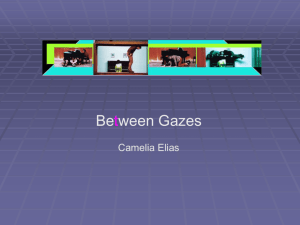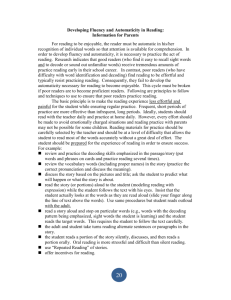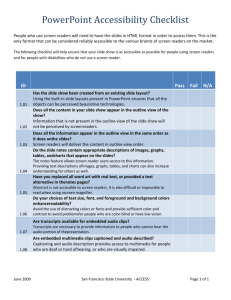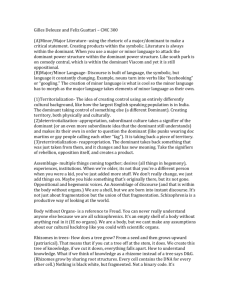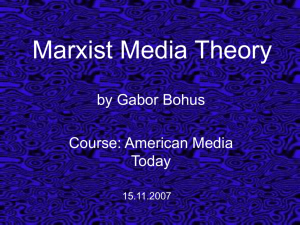Dominant, oppositional, and negotiated
advertisement
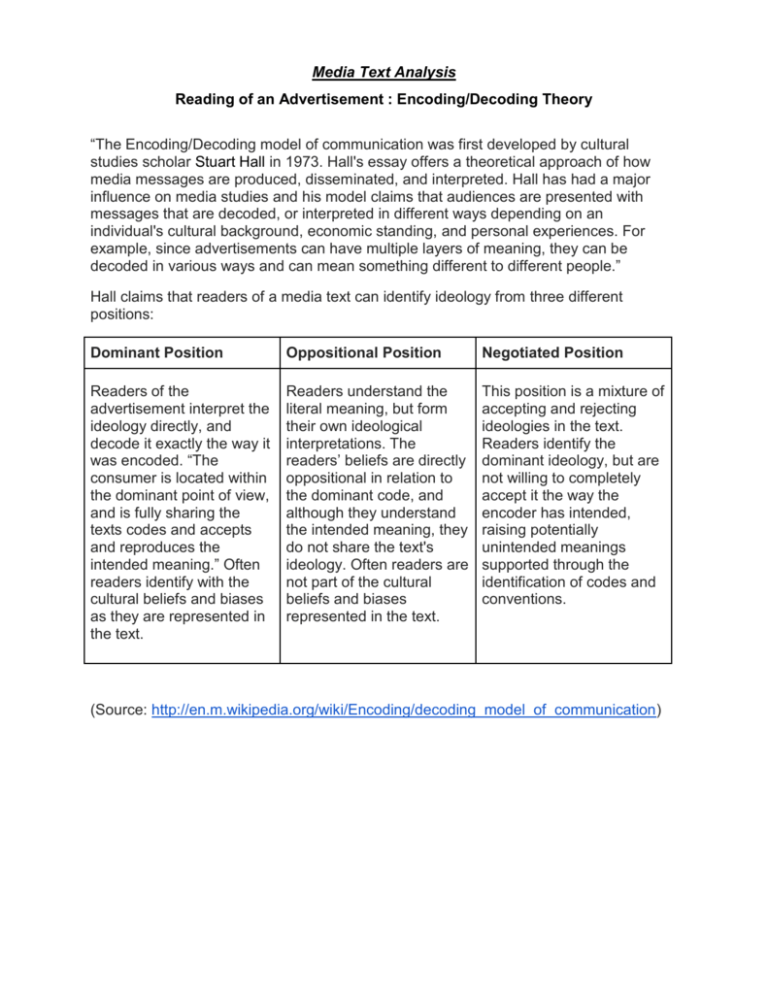
Media Text Analysis Reading of an Advertisement : Encoding/Decoding Theory “The Encoding/Decoding model of communication was first developed by cultural studies scholar Stuart Hall in 1973. Hall's essay offers a theoretical approach of how media messages are produced, disseminated, and interpreted. Hall has had a major influence on media studies and his model claims that audiences are presented with messages that are decoded, or interpreted in different ways depending on an individual's cultural background, economic standing, and personal experiences. For example, since advertisements can have multiple layers of meaning, they can be decoded in various ways and can mean something different to different people.” Hall claims that readers of a media text can identify ideology from three different positions: Dominant Position Oppositional Position Negotiated Position Readers of the advertisement interpret the ideology directly, and decode it exactly the way it was encoded. “The consumer is located within the dominant point of view, and is fully sharing the texts codes and accepts and reproduces the intended meaning.” Often readers identify with the cultural beliefs and biases as they are represented in the text. Readers understand the literal meaning, but form their own ideological interpretations. The readers’ beliefs are directly oppositional in relation to the dominant code, and although they understand the intended meaning, they do not share the text's ideology. Often readers are not part of the cultural beliefs and biases represented in the text. This position is a mixture of accepting and rejecting ideologies in the text. Readers identify the dominant ideology, but are not willing to completely accept it the way the encoder has intended, raising potentially unintended meanings supported through the identification of codes and conventions. (Source: http://en.m.wikipedia.org/wiki/Encoding/decoding_model_of_communication) Media Text Analysis Example of Ideological Reading: Dominant Reading: A dominant reading of this ad identifies the association between the codes, masculinity, and the product. The man in the image is upright with a look of self-confidence, and leading an active life. The reigns, belt, and partial image of chaps combined with what appears to be a horse’s mane suggest that he is a rancher, an occupation requiring physical work with the dominant belief that this is the type of work that is performed by men. Oppositional Reading: An oppositional reading of this Marlboro ad might reference the irony of an image which relies on masculinity to sell a product which causes impotence in men; as well cardiovascular disease and lung cancer—clearly linked effects of cigarette consumption—sap strength, thus making physical work very difficult. If a consumer smoked enough of the product, then this scene would no longer be possible. Negotiated Reading: A negotiated reading of the Marlboro ad identifies the masculine image that the advertisement projects combined with the stereotype of the “strong silent type” and acknowledges the health risks associated with this behaviour while linking smoking with glamour and success. Additionally, the ad presents the image of a strong, healthy, and “natural” male linked to the outdoors leading a traditional life which may still be appealing; however, the health consequences of smoking manufactured cigarettes makes this ironic (see the oppositional reading). Furthermore, the “pleasant” sense of outdoors may be juxtaposed with the reality of the unpleasant smell of cigarette smoke and may make the male figure represented unattractive in person. Source: Sturken, M. & Cartwright, L. (2001). Practices of Looking: An Introduction to Visual Culture. London: Oxford Press.
